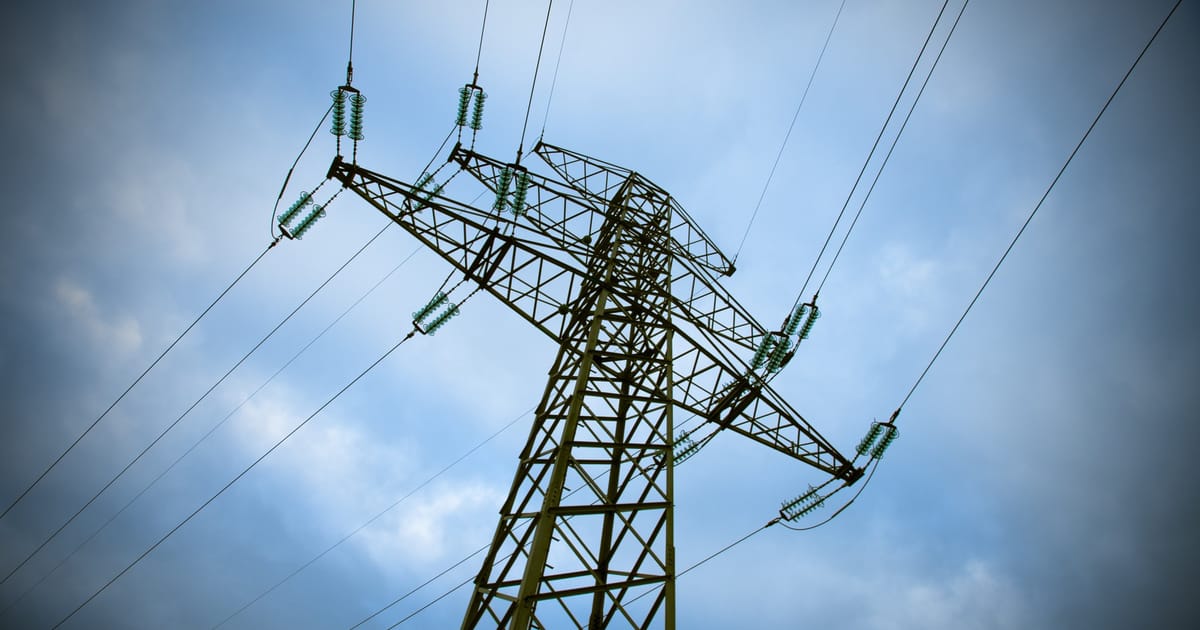When the lights go out
It wasn’t the first time the Czech Republic experienced a power outage, but the scope of Friday’s blackout was exceptional. Shortly after noon on July 4, large swathes of the country—including parts of Prague, Central Bohemia, and the north—suddenly lost power. In the capital, trams and metro lines ground to a halt, traffic lights went dark, and hundreds of people were trapped in elevators.
“It was an issue in the upper-level transmission grid. To put it simply, electricity stopped flowing into Prague from the outside,” said Karel Hanzelka, spokesperson for Prague’s power provider PRE.
According to the Czech transmission system operator ČEPS, the blackout was triggered by the fall of a phase conductor on line V411. The cause of the fall remains under investigation. The incident cut power to eight major substations; five were restored by early afternoon.
Government reacts: crisis team mobilized
“This is a serious and disruptive situation. Everyone is working intensively to restore power,” Prime Minister Petr Fiala (Civic Democratic Party) said in a post on social media. He later announced the activation of the Central Crisis Staff, which convened at 4:00 p.m. to coordinate national response efforts.
Industry Minister Lukáš Vlček (Mayors and Independents) warned that the problem would not be resolved quickly. “This isn’t something that can be fixed in minutes. It will take hours. The outage has affected a significant portion of the country,” he said.
The National Cyber and Information Security Agency, along with the counterterrorism unit, confirmed there was no evidence of a cyberattack.
Prague’s infrastructure at a standstill
The city of Prague felt the blackout acutely. On the eastern bank of the Vltava River, most tram services were suspended. The metro shut down entirely for a time, though service resumed later. While the international airport remained operational, long-distance and regional trains across the country were heavily disrupted.
“We’re dealing with widespread irregularities on the railway,” said Martin Kavka, spokesman for the Railway Administration. Trains stood still along major routes between Prague and cities like Děčín, Olomouc, and Brno. Emergency crews had to evacuate passengers from nine stranded trains.
Firefighters overwhelmed
Fire brigades across the country found themselves overwhelmed with calls. “The power outage is generating a high number of incidents—rescues from elevators, reported fires caused by diesel backup generators starting up,” said Miroslav Řezáč, spokesman for Prague’s firefighters.
By 2 p.m., firefighters had responded to 215 elevator rescues nationwide. In Central and Eastern Bohemia, crews worked throughout the afternoon, including in Mladá Boleslav, Kolín, and Poděbrady. In the Olomouc region, responders dealt with trapped individuals in Šumperk and Jeseník. In Červený Kostelec, a local volunteer unit was dispatched to provide a backup generator for oxygen devices in a hospice.
Hospitals under pressure
Hospitals across the affected regions implemented emergency protocols. In Kutná Hora, the entire hospital ran on a backup generator with an eight-hour fuel reserve. “We’re looking for a gas station to refill,” said a hospital receptionist. In Hradec Králové, several operations had to be postponed.
Health Minister Vlastimil Válek (TOP 09) assured the public that patient care remained stable. “Healthcare facilities have clear procedures for these situations. Backup power kicked in immediately,” he said.
In some cases, emergency services had to intervene directly. In the Hradec Králové region, paramedics responded to four patients who relied on home oxygen machines rendered inoperable by the blackout.
Regions without power
The outage extended far beyond Prague. Residents in towns such as Říčany, Benešov, Mělník, Mladá Boleslav, Týnec nad Sázavou, and Kolín lost electricity. The blackout also impacted cities in the north, including Ústí nad Labem, Liberec, Jablonec nad Nisou, Teplice, and Litoměřice. In Liberec, tram service came to a standstill.
Police increased patrols in affected cities and took over traffic management at key intersections. “We’ve boosted patrol activity and are manually directing traffic where needed,” the police wrote on social media.
Litvínov refinery burns excess production on safety burners during power outages|Photo: Gabriela Hauptvogelová, Czech Radio
What happened?
Initial technical reports pointed to the fall of a phase conductor on high-voltage line V411, which triggered a frequency imbalance and partial system collapse. According to Prague Mayor Bohuslav Svoboda, two key substations—Chodov and Malešice—went offline, leaving the city reliant on a single remaining substation in Řeporyje.
The precise cause of the infrastructure failure remains unclear. Whether it was triggered by weather, mechanical wear, or another technical factor will likely be the subject of investigation in the coming days.
Fragility of a modern grid
The July 4 blackout was a stark reminder of the vulnerability of modern infrastructure. It raised urgent questions about the physical security of key components in the Czech transmission grid and the sufficiency of backup systems in critical institutions like hospitals.
While the situation was ultimately managed without casualties, it revealed the need for improved coordination between energy providers, emergency responders, and government bodies. The resilience of the grid—and the nation’s preparedness for such incidents—will likely become a topic of political and public debate.
Summary: what we know about the July 4 blackout
Cause: Fall of a phase conductor on line V411, causing failure of 8 substationsAffected Areas: Prague, Central Bohemia, Liberec, Ústí nad Labem, Hradec Králové and othersImpact: Metro, tram, and train services disrupted; hospitals on generators; elevator rescuesFire Department Response: Over 200 elevator rescues across the countryCyberattack Ruled Out: Security agencies confirm no cyber incidentGovernment Action: Prime Minister Fiala activated the Central Crisis Staff
